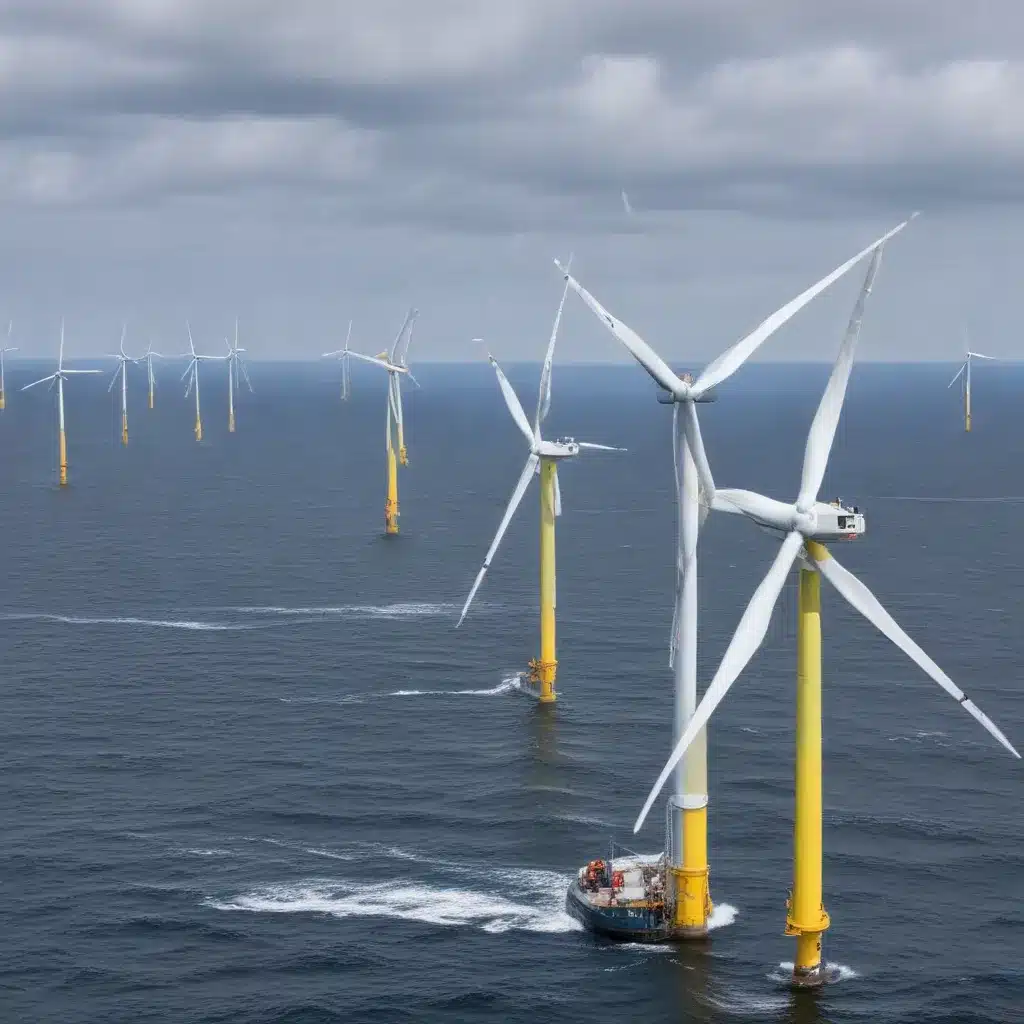
Europe is rapidly embracing the potential of offshore wind energy to meet its ambitious clean energy goals. As the world’s leading market for offshore wind, Europe has witnessed remarkable growth in this sector, driven by supportive policies, technological advancements, and a steadfast commitment to decarbonization. The offshore wind revolution in Europe is not only transforming the regional energy landscape but also serving as a model for the global transition to renewable energy.
The Offshore Wind Landscape in Europe
Global Offshore Wind Capacity: Europe currently accounts for over 75% of the world’s total offshore wind capacity, with an installed capacity of over 25 gigawatts (GW) as of 2021. This impressive figure is a testament to the region’s dedication to harnessing the power of the wind and reducing its reliance on fossil fuels. The United Kingdom, Germany, and Denmark have emerged as the frontrunners, collectively responsible for more than 90% of Europe’s offshore wind capacity.
Regulatory Frameworks and Policies: The European Union’s (EU) renewable energy and climate change policies have been instrumental in driving the offshore wind sector’s growth. The EU’s Renewable Energy Directive, which sets a binding target of at least 32% of the bloc’s energy consumption to come from renewable sources by 2030, has provided a clear policy framework for member states to develop their offshore wind resources. Additionally, initiatives like the European Green Deal and the EU’s Offshore Renewable Energy Strategy have further bolstered the region’s commitment to offshore wind development.
Technological Advancements: The offshore wind industry has witnessed significant technological advancements in recent years, enabling the sector to become more efficient, cost-effective, and reliable. Larger and more powerful wind turbines, improved foundation designs, and advancements in grid integration and transmission have all contributed to the sector’s growth. Furthermore, the emergence of floating offshore wind technology has opened up new opportunities, particularly in deeper water areas where conventional fixed-bottom turbines are not feasible.
Strategies for Offshore Wind Development
Project Planning and Site Selection: Effective project planning and strategic site selection are crucial for the successful deployment of offshore wind farms. European countries have honed their expertise in conducting detailed feasibility studies, environmental impact assessments, and comprehensive stakeholder engagement to identify the most suitable locations for offshore wind projects. This comprehensive approach ensures that projects are developed in harmony with local communities and environmental considerations.
Grid Integration and Transmission: Seamless grid integration and efficient transmission of offshore wind-generated electricity are essential for the sector’s growth. European nations have invested heavily in upgrading and expanding their power grids to accommodate the increasing share of renewable energy. Initiatives like the North Sea Wind Power Hub, a multinational project to develop a large-scale offshore grid infrastructure, demonstrate the region’s commitment to overcoming grid-related challenges.
Supply Chain Optimization: The offshore wind industry in Europe has also made strides in optimizing its supply chain. Collaboration between stakeholders, including manufacturers, developers, and service providers, has led to the development of robust and localized supply chains. This has not only enhanced the industry’s resilience but also created new economic opportunities, particularly in coastal regions.
Challenges and Obstacles
Environmental Considerations: While offshore wind presents a clean energy solution, it is not without its environmental challenges. Careful consideration must be given to the potential impact on marine ecosystems, bird and bat populations, and coastal communities. European countries have implemented rigorous environmental assessments and mitigation strategies to address these concerns and ensure a sustainable approach to offshore wind development.
Stakeholder Engagement: Effective stakeholder engagement is crucial for the success of offshore wind projects. Developing open and transparent communication channels with local communities, environmental groups, and other stakeholders can help address concerns and foster a collaborative approach to project development. European countries have recognized the importance of this aspect and have made strides in improving stakeholder engagement practices.
Financial Viability: Offshore wind projects typically require significant upfront investments, which can pose a challenge for developers and investors. However, the European offshore wind industry has demonstrated its financial viability, with the cost of offshore wind power decreasing steadily over the years. Innovative financing mechanisms, such as green bonds and public-private partnerships, have helped to unlock investments and drive the sector’s growth.
Emerging Trends and Innovations
Floating Offshore Wind: The development of floating offshore wind technology has opened up new opportunities, particularly in deeper water areas where traditional fixed-bottom turbines are not feasible. Countries like Norway, Portugal, and Scotland have embraced this technology, paving the way for its wider adoption across Europe.
Hybrid Energy Systems: The integration of offshore wind with other renewable energy sources, such as solar and energy storage, is an emerging trend in Europe. These hybrid energy systems can optimize energy generation, enhance grid stability, and provide a more reliable and diverse energy mix.
Digitalization and Automation: The offshore wind industry is embracing digital technologies and automation to improve operational efficiency, enhance asset management, and optimize maintenance strategies. European companies are at the forefront of these innovations, leveraging data analytics, artificial intelligence, and robotics to drive the sector’s continued growth.
The offshore wind revolution in Europe is a testament to the region’s unwavering commitment to a sustainable energy future. By harnessing the power of the wind, European nations are not only reducing their carbon footprint but also creating economic opportunities and fostering a cleaner, more resilient energy landscape. As the global community continues to grapple with the challenges of climate change, the European offshore wind industry stands as a shining example of what can be achieved through bold vision, strategic planning, and a relentless pursuit of innovation. The future of Europe’s energy landscape is undoubtedly centered around the offshore wind revolution, and the region’s continued leadership in this sector will undoubtedly inspire and influence the global transition to renewable energy. To learn more about the European Future Energy Forum and its initiatives, please visit www.europeanfutureenergyforum.com.







